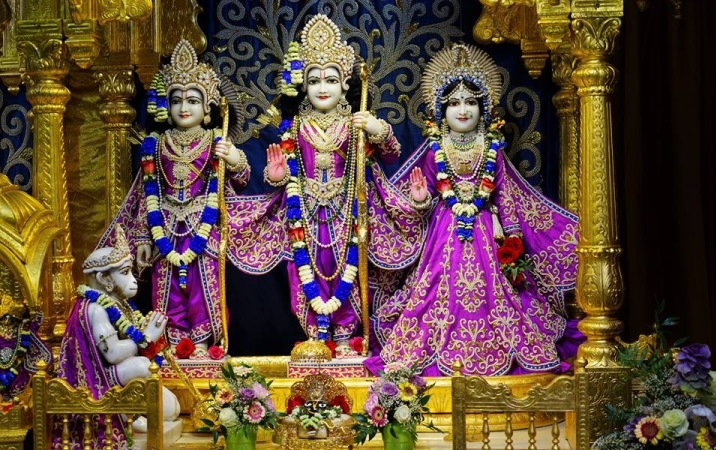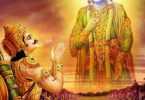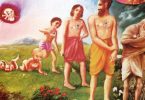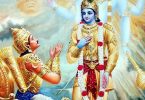Question: In discussing Vraja-lila, we often hear about the presence and/or the influence of Yogamaya in the activities of Krishna’s devotees. How is the presence of Yogamaya in Ramayana depicted? In Vraja, Yogamaya is personified as Purnamasi. Is there a comparable personality in Ramayana?
Answer by Romapada Swami:
In Ramayana, while there isn’t a single personality identified as Yogamaya, the understanding is that Sitadevi orchestrates everything.
As stated in the BG, Chapter 4 “sambhavami atma-mayaya” – His internal potency manifests and facilitates His pastimes. In Sri Rama’s pastimes, it is considered that Srimati Sitadevi is the one orchestrating everything (directly and indirectly). She is the energy or force behind the unfolding of the Ramayana. Hence Valmiki titled Ramayana as “Sitayam caritam mahat” – the great story/character of Sitadevi.
The phraseology used in Ramayana is “yadrcchaya” – which appears every time the storyline has a twist in the plot. Interestingly, every twist in the plot is inspired by a female personality, indicating the yoga-maya feature at play – Manthara, Kaikeyi, Surpanakha, and Sitadevi.
Krishna openly exhibited His Supremacy, whereas Rama predominantly played the role of a perfect human.
To get the full benefit of Ramayana, it is best to accept it as it is, without comparing Ramayana to Krishna’s pastimes and His devotees, which have a totally different mood and purpose.
_____________
Example of Rama portraying Himself as a dependent human:
In Yuddha Kanda, we learn that Garuda came down and brought back the lives of both Rama and Lakshmana. Rama spoke these words to Garuda (6.50.42-44) –
“Now, by your grace, we both have overcome a great disaster created by Indrajit, the son of Ravana. We have been made strong as before.”
“By meeting you thus, my heart is gladdened in the same manner as I am meeting Dasaratha, my father, and Aja, my paternal grandfather.”
“Who are you, the one endowed with beauty, having blissful garlands and anointments, wearing clean garments and adorned with divine ornaments?”
“`
In contrast, Rama sometimes exhibited His Supremacy
- in Aranya Kanda, Rama delivered Jatayu from this world (3-68-30).
“You may attain the spiritual world now”
- (6-18-23)
“O, Sugriva, Lord of monkey-troops! If I wish, I can kill those devilish beings, demons, supernatural beings, and ogres living on earth with just a tip of my finger.” [Here the commentator says ‘Rama remembered one of his previous avataras, Lord Narasimadeva’]
“`
Rama’s Supremacy confirmed by Mandodari
Mandodari confirms the Supremacy of Rama directly to Rama himself in Yuddha Kanda, after killing of Ravana (6.111.14-17)
“This Rama is paramatma, he is ever existing eternal personality, he has no beginning, middle, or end, greater than anyone, including Brahma. He is one beyond ignorance, he is the nourisher, he is wielding a conch, a disc and a mace, wearing the ‘Srivatsa’ mark on his chest, of lasting beauty, incapable of being conquered, a perpetual one, being the constant soul of the universe, truly mighty, the lord of all the worlds, the prosperous one having a great splendor and Vishnu, the lord of maintenance of the world with a wish to benefit the worlds, assuming a human form surrounded by all the gods in the form of monkeys, Rama killed you, surrounded by demons.”
Though we can see a few quotes like this in Ramayana stating the Supremacy of Rama, Rama himself was often concealing his divinity, while promoting His humanlike features.
Ramayana revealed different gradations of His personality to different individuals. For example:-
* Sugriva tested Rama’s powers. Rama fulfilled Surgiva’s test. From this, we learn how a beginner may behave in the bhakti process
* Hanuman accepted Rama’s divinity at first sight itself. From this, we can learn how a great devotee would behave.
* Ravana showed his affection towards Rama’s property but not towards Rama himself, like most materialistic people.
* Surpanaka showed her affection towards Rama but disrespected Rama’s wife, like those who worship God but do not value the Lord’s devotee
* Vibisana, who taught what it means to surrender







